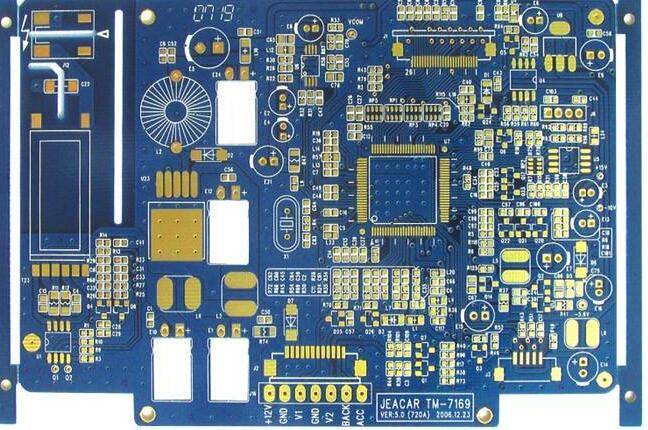Analysis of common conditions of PCB welding
1. After soldering, there are many dirty boards on the PCB surface:
1. It is not preheated before soldering or the preheating temperature is too low (dip soldering, the time is too short).
2. The board moves too fast (FLUX fails to evaporate sufficiently).
3. The temperature of the tin furnace is not enough.
4. It is caused by adding anti-oxidant or anti-oxidizing oil to the tin liquid.
5. Too much flux is applied.
6. The component foot and the board hole are out of proportion (the hole is too large) to increase the flux.
9. During the use of FLUX, no diluent is added for a long time.
Second, on fire:
1. The wave furnace itself does not have an air knife, which causes too much flux to be applied, which drips onto the heating tube during preheating.
2. The angle of the air knife is wrong (makes the flux coating uneven on the PCB).
3. There are too many adhesive strips on the PCB, which ignites the adhesive strips.
4. The board travel speed is too fast (FLUX is not completely volatilized, FLUX drips) or too slow (causing too high temperature on the surface of the board).
5. Process problem (PCB board is not good and the distance between heating tube and PCB is too close).
3. Corrosion (components turn green, solder joints turn black)
1\\ Insufficient preheating (low preheating temperature, fast board moving speed), resulting in more FLUX residues and too many harmful residues).
2\\ Use the flux that needs to be cleaned, and it is not cleaned or cleaned in time after soldering.
Fourth, power connection, leakage (poor insulation) PCB design is unreasonable, wiring is too close, etc. PCB solder mask is of poor quality and easily conducts electricity.
5. Missing welding, virtual welding, continuous welding The amount of FLUX coating is too small or uneven. Some pads or solder feet are severely oxidized. PCB wiring is unreasonable (the distribution of components is unreasonable). The foaming tube is clogged and the foaming is uneven, which causes the uneven coating of FLUX on the PCB. Improper operation method when immersing tin by hand. The inclination of the chain is unreasonable. The crest is uneven.

Six, the solder joints are too bright or the solder joints are not bright
1. This problem can be solved by choosing bright type or extinction type FLUX);
2. The tin used is not good (for example, the tin content is too low, etc.).
Seven, short circuit 1) Tin liquid causes short circuit:
A. Continuous welding occurred but not detected.
B. The tin liquid has not reached the normal working temperature, and there is a "tin wire" bridge between the solder joints.
C, there is a small bridge between solder joints.
D. If continuous welding occurs, the bridge is erected.
2) PCB problems: such as: the PCB itself has a solder mask falling off and causing a short circuit
Eight, the smoke is big, the taste is big:
1. The problem with FLUX itself
A. Resin: If ordinary resin is used, the flue gas will be larger
B. Solvent: This means that the odor or pungent odor of the solvent used in FLUX may be relatively large. C. Activator: smoke and pungent odor
2. The exhaust system is not perfect
Nine, splash, tin beads:
1) Process
A, low preheating temperature (FLUX solvent is not completely volatilized)
B, the board speed is too fast to reach the preheating effect
C, the inclination of the chain is not good, there are bubbles between the tin liquid and the PCB, and tin beads are generated after the bubbles burst
D, improper operation method when dipping the tin by hand
E, working environment is humid
2) The problem of PC B board
A, the board surface is wet, not fully preheated, or moisture is generated
B. The design of the out-gassing hole of the PCB is unreasonable, causing gas trapping between the PCB and the tin liquid. C. The design of the PCB is unreasonable, and the parts feet are too dense, causing gas trapping.
10. The soldering is not good and the solder joints are not full. The double wave process is used. The effective fraction in FLUX has been completely volatilized when the tin is passed. The board travel speed is too slow, which makes the preheating temperature too high. FLUX coating is uneven. The pads and component feet are seriously oxidized, resulting in poor tin-eating, too little FLUX coating; failure to completely infiltrate the PCB pads and component feet. The PCB design is unreasonable; the layout of the components on the PCB is unreasonable, affecting some parts Tin on components
11. FLUX foaming is not good. The selection of FLUX is not suitable for the foaming tube hole is too large or the foaming area of the foaming tank is too low. The air pressure of the foaming tube is too low. Uneven thinner added too much
12. The foaming is too good. The air pressure is too high. The foaming area is too small. Too much FLUX is added to the soldering tank. The thinner is not added in time, which causes the FLUX concentration to be too high
13. The color of FLUX is somewhat non-transparent. A few photosensitive additives are added to FLUX. Such additives will change color when exposed to light, but will not affect the welding effect and performance of FLUX. 14.PCB solder mask peels off, peels off or blisters 1. More than 80% of the reasons are the problems in the PCB manufacturing process. Too many times of tin passing during hot air leveling 2. The temperature of the tin liquid or the preheating temperature is too high 3. Too many times during soldering 4. During the operation of hand dipping tin, the PCB stays on the surface of the tin liquid for longer than the solder paste printing